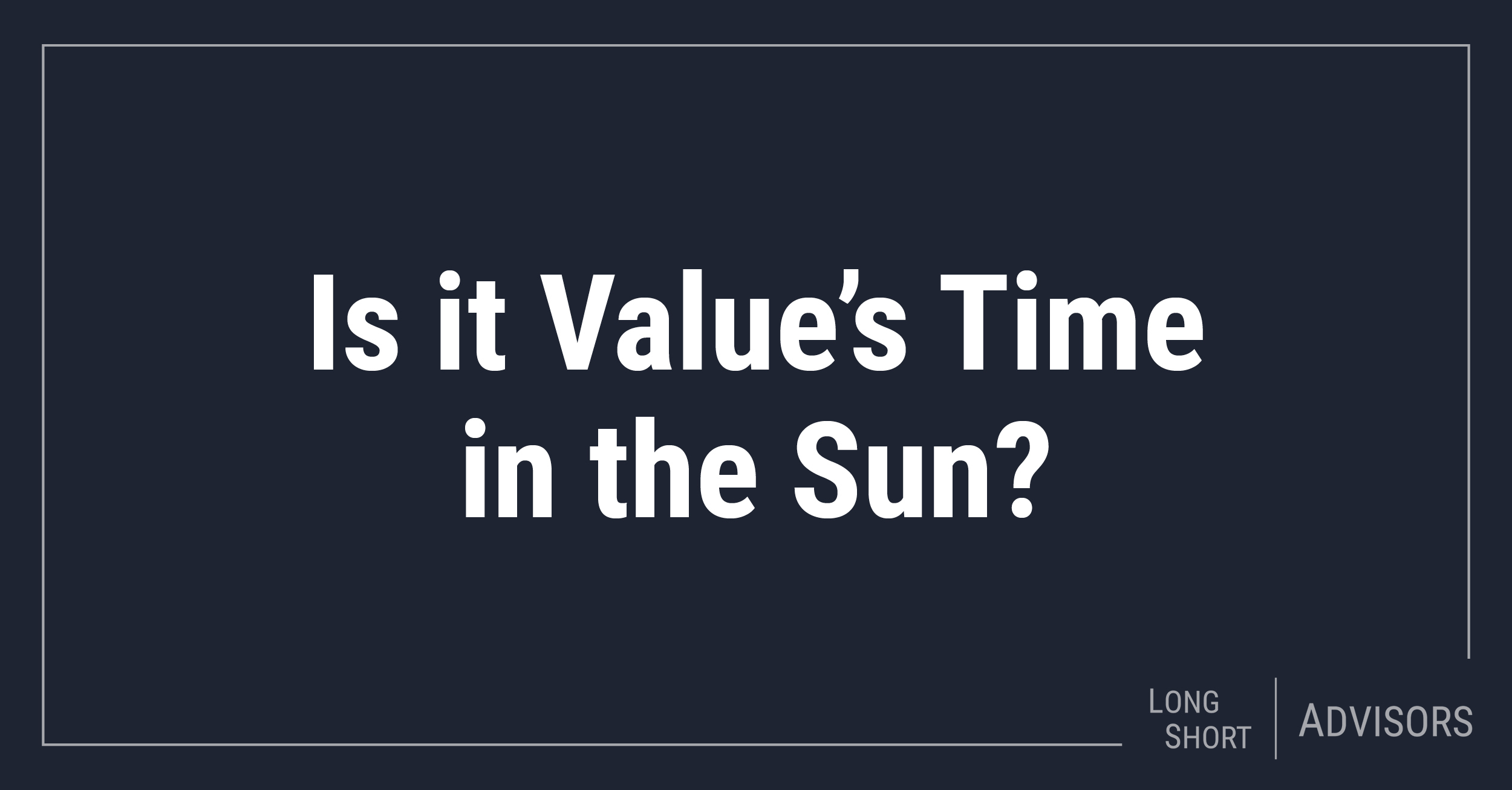Last year, punctuated by high inflation and rapidly rising interest rates, was a period that most stock and bond investors would prefer to forget. It may, however, have marked the start of a long overdue rotation in investment style from growth to value after more than a decade of growth’s dominance. In 2022, value stocks outperformed their growth counterparts by more than 20 percentage points, as measured by Russell 1000 Growth and Value indexes1.
In fact, growth’s long reign is a bit of an anomaly—for the past 90 years, value has generally trumped growth over long stretches—so value has history on its side if it emerges from the investment shadows (thus far in 2023, growth has led, driven by a narrow group of mega-caps including Apple, Microsoft, and Meta2). In addition, the present climate of elevated inflation and high interest rates—which we believe will be with us for longer than many market participants seem to believe—favors value stocks.
During an extended (and unusual) period of rock-bottom rates, there was little penalty for investors to purchase growth stocks selling at high P/E multiples3 with projected earnings and cash flows far off into the future. High interest rates, however, change the math when calculating what those earnings are worth today when using valuation formulas such as discounted cash flow. Value stocks’ cash flow streams tend to be much more near-term, which implies less of an impact on valuation from higher interest rates.
Opportunity Born of Crisis
This year’s mix of banking stress, weakening growth with stubbornly high inflation (we hear the “stagflation”4 word bandied about increasingly these days), and fears of the economy sinking into a recession in the coming quarters brings its own set of challenges—but also opportunities for adroit value investors. For instance, dislocations in the financial sector, which has the highest industry weighting in value indexes, have created some attractive values in healthy banks whose stocks were unfairly beaten down, and in property & casualty insurers, which can now earn much more money by investing their premium income at today’s high rates (for more on the financial sector, see our earlier posting, Financials Are More Than Just Banks).
The current challenges of high rates, banking turmoil, and perhaps a looming recession favor value investors who possess a certain skill set. They should be bottom-up investors with accounting prowess who, in this transitioning economy, are able to scrutinize and comprehend companies’ balance sheets and free cash flows even more than the income statements, which are more easily manipulated by managements. For example, there are values in banks whose balance-sheet risks (e.g., hold-to-maturity assets and deposit liabilities) are carefully managed.
The successful investor will assess the downside risks of companies’ debt. Was much of the debt taken on when rates were negligible, and is this leverage turning problematic in today’s backdrop of high rates, banks’ dramatic tightening of lending standards, and declining economic growth? In this climate, robust free cash flows and the pursuit of quality in value stocks grows even more vital. One other element is that the stocks must be bought at significant discounts to intrinsic value. Stocks purchased with a wide margin of safety after careful analysis of traits like strong free cash flow and balance sheets are more likely, on a relative basis, to be less volatile and reward investors by participating in rising markets and limiting downside losses when market sentiment inevitably deteriorates.
Conclusion
That describes the types of securities that may present interesting investment opportunities in today’s environment. A long-short fund extends the potential for return since it can also short stocks with the reverse qualities—high leverage and negative sensitivity to higher rates and slowing economic growth. Long-short funds—as with insurance businesses—also benefit from higher rates, which boost interest income earned on cash proceeds generated by short sales. The ability to reduce downside and potentially gain when the broader market declines sounds very appealing in light of an arguably gloomy outlook for the economy and market.
______
1The Russell 1000® Growth Index measures the performance of the large cap growth segment of the US equity universe. The Russell 1000® Value Index measures the performance of the large cap value segment of the US equity universe.
2As of 4/30/2023, the LS Opportunity Fund held the following positions: Apple, -2.1%; Microsoft, 1.3%; Meta, 0%.
3The price-to-earnings ratio (P/E) ratio measures a company's stock price in relation to its earnings per share.
4Stagflation is an economic phenomenon marked by persistent high inflation, high unemployment, and stagnant demand in a country's economy.
16926388-UFD-05252023








